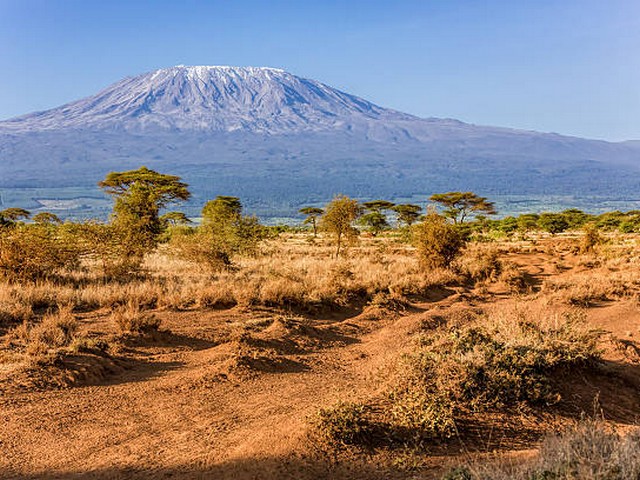Kilimanjaro Photography Tips For Capturing Stunning Landscapes
Standing as Africa’s highest peak, Mount Kilimanjaro is more than just a mountain; it’s a picturesque canvas where the heavens seem to meet the earth in a symphony of natural beauty. For photography enthusiasts, Kilimanjaro offers an unparalleled opportunity to capture the essence of Earth’s raw, unfiltered splendor. Whether you’re a seasoned photographer or an amateur with a keen eye for beauty, the Kilimanjaro Centre for Trekking and Ecotourism (KCTE) is here to guide you through an incredibly scenic journey. Let’s dive into some expert Kilimanjaro photography tips to ensure you capture those breathtaking landscapes flawlessly.
Understanding the Photographic Terrain of Kilimanjaro
The Five Climatic Zones
Kilimanjaro is unique, offering not one but five distinct climatic zones to photograph — from lush rainforests to alpine deserts. Each zone presents its own set of dramatic landscapes that are a dream for photographers. Knowing what each zone offers can help you prepare your shot list and gear accordingly.
Best Times to Capture the Magic
The golden hours of sunrise and sunset provide magical light that enhances the mystique of Kilimanjaro’s landscapes. However, capturing the snowy peak under a full moon or the clear blue skies in the early morning can also produce stunning visuals. Timing your shots can make the difference between a good photo and a great one.
Essential Gear for Kilimanjaro Photography
Choosing Your Equipment
A good DSLR or mirrorless camera is fundamental for high-quality photos. Lenses are equally crucial; a wide-angle lens (such as 16-35mm) is perfect for expansive landscape shots, while a telephoto lens can capture distant wildlife and intricate details of the mountain’s surface.
Don’t Forget the Accessories
Tripods are essential for stability, especially for those sunrise or sunset shots. Additionally, consider filters such as polarizers to enhance the vibrant blues and greens, or ND filters for capturing smooth, flowing water in the mountain’s streams.
Composition Techniques for Captivating Images
Rule of Thirds
The rule of thirds involves dividing the image using two horizontal and two vertical lines. Placing key elements of your composition where these lines intersect can create a more engaging photo.
Leading Lines and Framing
Use natural lines — such as paths, streams, or ridges — to lead the eye into the main subjects of your photo. Framing your shots with branches or rocks can also add depth and interest to your compositions.
Weather and Lighting Challenges
Dealing with Harsh Sunlight
Midday sun can cast harsh shadows and create unflattering highlights on Kilimanjaro. Using a polarizing filter can help manage these effects, and shooting in RAW allows more flexibility in post-processing.
Adapting to Changing Conditions
Mountain weather is notoriously unpredictable. Always be prepared to adapt your shooting plans and make the most of the conditions at hand. Sometimes, the most dramatic shots come from the least expected weather!
Iconic Shots and Hidden Gems
Must-Capture Views
- Uhuru Peak at Sunrise: The highest point on the mountain offers a breathtaking view as the sun rises.
- The Great Barranco Wall: A massive, steep ridge that provides a dramatic backdrop for any photo.
- The Ash Pit: A surreal, often overlooked site deep within Kilimanjaro’s crater.
Explore Off the Beaten Path
KCTE encourages adventurers to explore lesser-known areas with us. These locations often offer unique photographic opportunities away from the usual crowd.
Preservation Through Photography
Leave No Trace
It’s vital to maintain the pristine nature of Kilimanjaro. While capturing its beauty, ensure you leave no trace. This means carrying back everything you bring, including batteries and plastic wrappers.
Using Photography for Conservation
Share your photos to raise awareness about the importance of preserving this magnificent mountain. Your images can inspire others to support conservation efforts and respect the natural environment.
Conclusion: Why Book With KCTE?
At Kilimanjaro Centre for Trekking and Ecotourism, not only do we provide expert guidance on climbing this majestic mountain, but we also offer specialized photography tours designed to capture its essence. By booking your Kilimanjaro climb with KCTE, you ensure a journey filled with support, safety, and unforgettable photographic opportunities. Ready to capture the stunning landscapes of Kilimanjaro? Join us on this extraordinary adventure!
FAQs About Kilimanjaro Photography
What is the best month to photograph Mount Kilimanjaro?
The best months are usually the driest months, January, February, and September, when the skies are clearest and Mount Kilimanjaro is least obscured by clouds.
Do I need special permits to photograph on Kilimanjaro?
No special permits are required for photography for personal use. However, for commercial shoots, permissions must be obtained from the Tanzania National Parks Authority.
Can beginners in photography join KCTE’s tours?
Absolutely! KCTE welcomes all levels of photographers. We provide tips and help you enhance your photography skills during the trek.
Capture the spirit of Mount Kilimanjaro through your lens with KCTE guiding you every step of the way. Book your adventure today and bring home more than just memories — bring back stunning photographs that tell the story of your encounter with the Roof of Africa!




